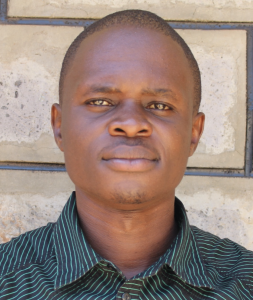Imusutsu Village has 120 residents but is growing rapidly. More and more people are moving to Imusutsu because there is easy access down the road to large markets, banks, schools, and other places that people can work to earn a living. People also taxi others on their motorbikes and practice farming.
For example, a normal day for Mrs. Ruth Chogo begins at 5:30 am when she wakes up to prepare breakfast for her children who are learning at Musutsu Primary School. At about 7 am she leaves for the market where she runs a grocery kiosk. Chogo retires to her home at about 6:30 pm to make dinner and be with her family until bedtime.
But water challenges often interrupt the daily schedule. People don't have water at home so they have to go out into the community to find some. They most often use Ikosangwa Spring, but the water here is dirty and unsafe for drinking.
Being a large pool of water, people bring their containers and just dunk them under the surface until full. We met Mrs. Violet Nyangasi at the spring, who uses a large 20-liter container every time she fetches water. As we followed her home, we found out that she has no water storage. That means that she has to go back to the spring each time the 20-liter container is used up.
Mrs. Ruth Chogo said "This spring has remained unprotected since it started discharging water."
"I got married here and found it at this state and indeed it is dangerous to us community members who depend on it. Being exposed to contaminants means that the health of the members is at risk."
What we can do:
Spring Protection
We will protect the spring to ensure that the water is safe, adequate, and secure. Construction will keep surface runoff and other contaminants out of the water. There will be stairs down to the collection point and a pipe that can easily fill water containers. With the community’s high involvement in the process, there should be a good sense of responsibility and ownership for the new clean water source.
Training
There are quite a few community members who have a good idea about how to practice good hygiene and sanitation, but there are others who are lagging behind.
Community members will attend hygiene and sanitation training for at least two days. This training will ensure participants have the knowledge they need about healthy practices and their importance. The facilitator plans to use PHAST (Participatory Hygiene and Sanitation Transformation), CLTS (Community-Led Total Sanitation), ABCD (Asset-Based Community Development), group discussions, handouts, and demonstrations at the spring. One of the most important topics we plan to cover is the handling, storage, and treatment of water. Having a clean water source will be extremely helpful, but it is useless if water gets contaminated by the time it’s consumed.
Training will also result in the formation of a committee that will oversee operations and maintenance at the spring. They will enforce proper behavior around the spring and delegate tasks that will help preserve the site, such as building a fence and digging proper drainage. The fence will keep out destructive animals, and the drainage will keep the area’s mosquito population at a minimum.
Sanitation Platforms
"As members, our state of hygiene is not bad and this can be evidenced by the various sanitation facilities in place. Even though we are trying our best, there are some of our members who are not informed and we will talk to them and encourage them to do so," said Mrs. Nyangasi. There are still a few households that need a pit latrine so that waste is properly disposed of, while some of the pit latrines we observed have unstable floors that endanger their users.
On the final day of training, participants will select five families that should most benefit from new cement latrine floors.
Training will also inform the community and selected families on what they need to contribute to make this project a success. They must mobilize locally available materials, such as bricks, clean sand, hardcore, and ballast. The five families chosen for sanitation platforms must prepare by sinking a pit for the sanitation platforms to be placed over. All community members must work together to make sure that accommodations and food are always provided for the work teams.

 Protected Spring
Protected Spring
 Rehabilitation Project
Rehabilitation Project






































